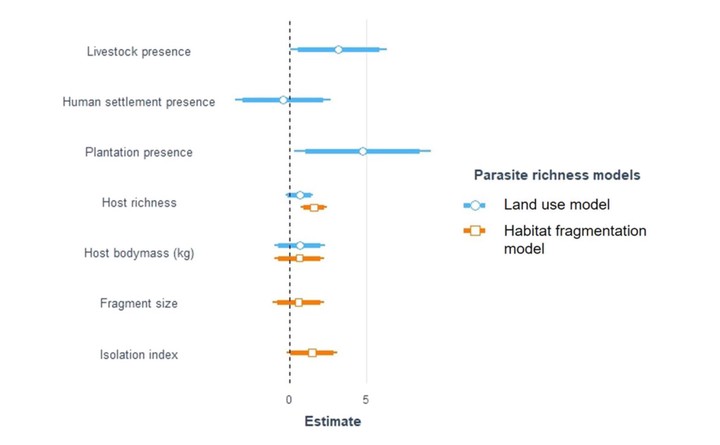Land Use Change Increases Wildlife Parasite Diversity in Anamalai Hills, Western Ghats, India
 Image credit: [Debapriyo Chakraborty]
Image credit: [Debapriyo Chakraborty]
Abstract
Anthropogenic landscape changes such as land use change and habitat fragmentation are known to alter wildlife diversity. Since host and parasite diversities are strongly connected, landscape changes are also likely to change wildlife parasite diversity with implication for wildlife health. However, research linking anthropogenic landscape change and wildlife parasite diversity is limited, especially comparing effects of land use change and habitat fragmentation, which often cooccur but may affect parasite diversity substantially differently. Here, we assessed how anthropogenic land use change (presence of plantation, livestock foraging and human settlement) and habitat fragmentation may change the gastrointestinal parasite diversity of wild mammalian host species (n = 23) in Anamalai hills, India. We found that presence of plantations, and potentially livestock, significantly increased parasite diversity due possibly to spillover of parasites from livestock to wildlife. However, effect of habitat fragmentation on parasite diversity was not significant. Together, our results showed how human activities may increase wildlife parasite diversity within human-dominated landscape and highlighted the complex pattern of parasite diversity distribution as a result of cooccurrence of multiple anthropogenic landscape changes.
#Supplementary notes can be added here, including code and #math.